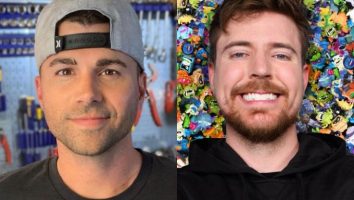After operating for 19 years as an ad-free kids cable net, Disney Channel has broken the commercial seal and accepted McDonald’s as its first corporate sponsor. Expanding on its existing 10-year alliance with The Walt Disney Company, McD’s will spend an estimated US$2 million to US$3 million a year on the Disney Channel buy. For its investment, the fast-food giant will get three or four 15-second spots, the first of which has already started running before and after programming in the Playhouse Disney preschool block that airs weekdays from 6 a.m. to 2 p.m. and weekends from 6 a.m. to noon. Against a background showing kids playing and singing, the sponsored messages will intone: ‘Where the learning is powered by imagination–McDonald’s is proud to be a sponsor of Playhouse Disney.’
The move to embrace a sponsorship model comes on the heels of several poor financial quarters for Disney. The company’s net income for Q1 2002 was down 55% over the same period last year, and execs are desperate to effect a bounceback. ‘These are days when you have to turn over every stone to find revenue,’ says Rich Ross, Disney Channel’s president of entertainment. ‘We are offering the most uncluttered universe of kids television, reaching into 80 million U.S. homes. We also communicate with all of our sister divisions–be it publishing, radio or on-line–to ensure that we provide our advertisers with the breadth of reach that they want and are entitled to.’
With these unique advantages topping the sell sheet, Disney Channel is already negotiating similar deals with other potential sponsors. But some feel that the model at hand is too limiting to entice any players but behemoth conglomerates that have household-name brand identities. ‘A sponsorship model means that advertisers can only run a general branding message,’ says Tom Horner, senior VP of media services at Active International. ‘They won’t be able to run a tailored piece of creative designed to sell a specific product, which is what all our clients want to do.’
Horner believes that Disney Channel’s entry into sponsorship poses the biggest threat to public broadcaster PBS, which relies on sponsorship dollars as a key part of its financing model. In fact, sponsorship brought in US$55 million last year alone, according to Judy Harris, executive VP of PBS businesses and development. Harris says she’s not worried that Disney will encroach on PBS sponsorship turf, and the pubcaster will be counting on its reach into 100 million homes (99% of the U.S. population) and its many curriculum-focused outreach tentacles–including the Ready to Learn literacy program and several in-school video series–to keep luring new sponsors to the channel.
Nickelodeon’s Nick Jr. block, which relies on sponsorships to make up 5% of its commercial revenues, is also banking on the draw of its multimedia assets and brand strength to stay competitive. ‘Our sponsorship participants are involved with us on a lot of levels beyond the channel, including www.nickjr.com, Nick Jr. magazine and our live tours,’ says Sue Danaher, executive VP and general sales manager for Nick, Nick at Nite, TV Land and TNN. ‘We’re not altering our sales strategy in any way. We are just focusing on constantly refreshing the brand.’
As to making further tracks into the ad market, Ross says Disney Channel’s distribution agreements with cable and satellite operators prohibit the net from selling full-on commercial spots at the present time.





















